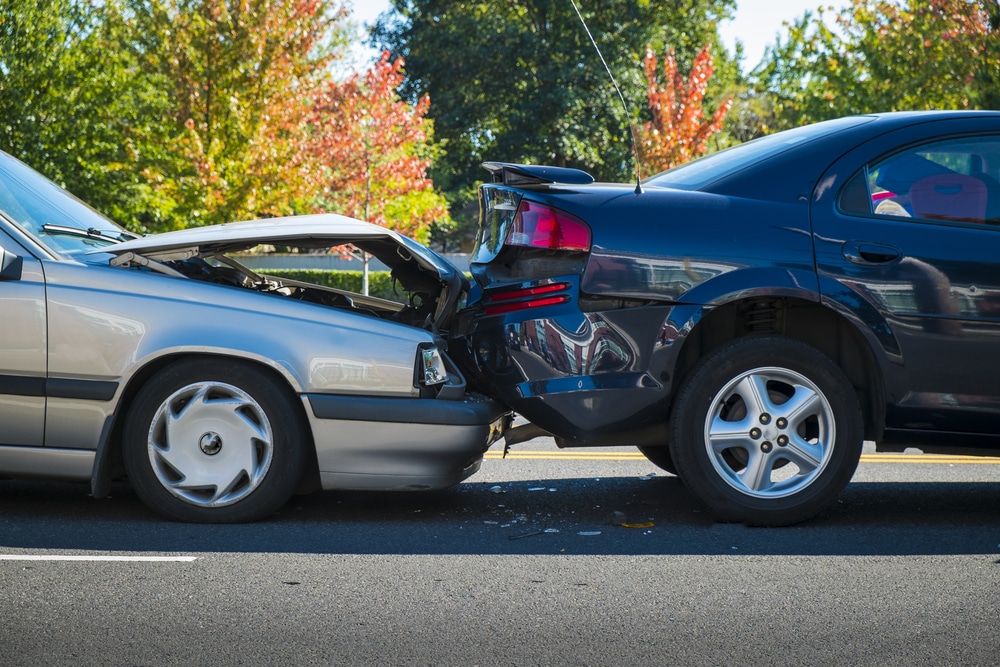If you’ve been involved in a car accident, it can be an overwhelming and stressful experience. But if you’ve been rear-ended, there are some important steps to take to ensure you get the compensation and justice you deserve. In this article, we’ll go through what to do if you’ve been rear-ended and how to get the best outcome for your case.
What to do if You’ve Been Rear Ended

Check for Injuries
After the accident, it is important to check for injuries. If you are injured, seek medical attention immediately and take notes about your injuries. Do not move if you have suffered a neck or back injury, as this can make the injury worse. If you are not injured, check on the other driver as well as any passengers in your vehicle. Call 911 if anyone is in need of medical attention. Even if you think the injuries are minor, it is important to get them checked by a medical professional. If possible, take photos of the scene of the accident and any damage caused to both vehicles.
Summon Medical Help and Administer First Aid
If anyone has been injured in the accident, summoning medical help and providing first aid as soon as possible is important. If there are any obvious injuries, such as broken bones or lacerations, it is best to call 911 or another emergency response service. For less severe injuries, you may be able to provide basic first aid, such as bandaging wounds or giving painkillers. It is important to note that even if you don’t feel any pain immediately, some car accident injuries can take days or weeks to manifest, so seek medical attention if necessary.
Call the Police
It is important to call the police after being rear-ended, even if the damage to your car is minor. The police will help document the incident and provide an official record of the accident. They can also help to ensure that any medical personnel needed are dispatched. In addition, the police can help to move both vehicles to a safe location, if necessary. It is important to remain at the scene until law enforcement has arrived and given you permission to leave.
Get Information from the At-Fault Driver
After the initial shock of being rear-ended, obtaining information from the at-fault driver is important. Make sure to exchange names, contact information, insurance information, and license plate numbers. Try to get a copy of their driver’s license or insurance card for verification. It is also important to get their car’s make, model, and year.
Additionally, ask if they are the owner of the vehicle they are driving. If they are not, be sure to get the contact information for the owner as well. Finally, if there were any witnesses present, ask them to provide their contact information in case it is needed later.
Move to a Safe Location
Once the incident has occurred and all injured parties have been taken care of, it is important to move to a safe location as soon as possible. Move your car off the road to the side or a nearby parking lot if possible. If your car is too damaged or unsafe to drive, then remain in place and turn on your hazard lights. However, if you are able to move your car and it is causing a hazard where it is, pull it to the side of the road or a sidewalk.
You should also make sure that you have plenty of room ahead of you in case an approaching driver does not see you. This way, if you see a driver quickly approaching behind you, you will have room to move forward and honk your horn in hopes of getting his attention before an accident occurs.
Document Everything
It is important to document everything that happened at the scene of an accident. If possible, take pictures of the scene, including the vehicles involved, the speed, direction, and any other details that could prove liability. You should also take notes on your injuries, if any, and any other relevant information.
Be sure to get as much information from the at-fault driver as possible, including their name, address, contact information, driver’s license number, and insurance information. Finally, be sure to contact your insurance company to report the accident and file a claim.
Contact an Attorney
After you have assessed the situation and made sure that all those involved are safe, it is important to contact an experienced attorney. Your attorney will be able to help you understand your rights and responsibilities and will be able to provide you with advice regarding the best course of action for your situation.
They can also help you file a claim with the at-fault driver’s insurance company and advise on settlement negotiations. Your attorney will also be able to advise you on whether or not legal action is necessary and the potential outcomes of such action. Most importantly, they can provide invaluable knowledge and guidance throughout the process.
Don’t Admit Fault
It is important to remember to never admit fault if you have been rear-ended in a car accident. Even if you believe the accident was partially your fault, wait to speak to a lawyer and let the police report or the judge assign fault.
If the other driver accuses you of stopping suddenly or swerving into their lane, remain calm and do not admit to anything. Seek medical attention for those injured, as well as for yourself. Take notes about your injuries, call the police, get information from the at-fault driver, move to a safe location, document everything, and contact an attorney. Filing an insurance claim is also important after a rear-end collision.
Take Notes on Your Injuries
It is important to take detailed notes on any injuries you may have suffered as a result of being rear-ended. This includes noting the time of the incident, the location, the type of injury (bruising, lacerations, broken bones, etc.), any pain you are feeling, and the severity of that pain. You should also take pictures or videos of any visible evidence of your injuries. All of this information can be used as evidence in a potential insurance claim or lawsuit. Documenting your injuries as soon as possible after the accident is important.
File an Insurance Claim
After the accident, filing an insurance claim is an important step. It’s important to contact your insurance company and file a claim as soon as possible.
Make sure to have all the necessary documents, such as a copy of the police report, photographs of the scene of the accident, and information from the at-fault driver. Additionally, you may need to provide medical records, witness statements, and any other relevant information that can help support your claim.
Be sure to keep a copy of all documents for yourself and submit the originals to your insurance company. It’s essential not to admit fault in any way when speaking with your insurance company or the at-fault driver’s representatives.
Closing Remarks: What to do if You’ve Been Rear Ended
In closing, it is important to remember to remain calm and take the necessary steps to protect yourself and others if you have been rear-ended in a car accident. Make sure to check for injuries, call the police, get information from the at-fault driver, move to a safe location, and document everything. Additionally, it is important to contact an attorney and not admit fault. Take notes on your injuries and file an insurance claim. Following these steps will ensure that you are taken care of and that you get the compensation you deserve.





